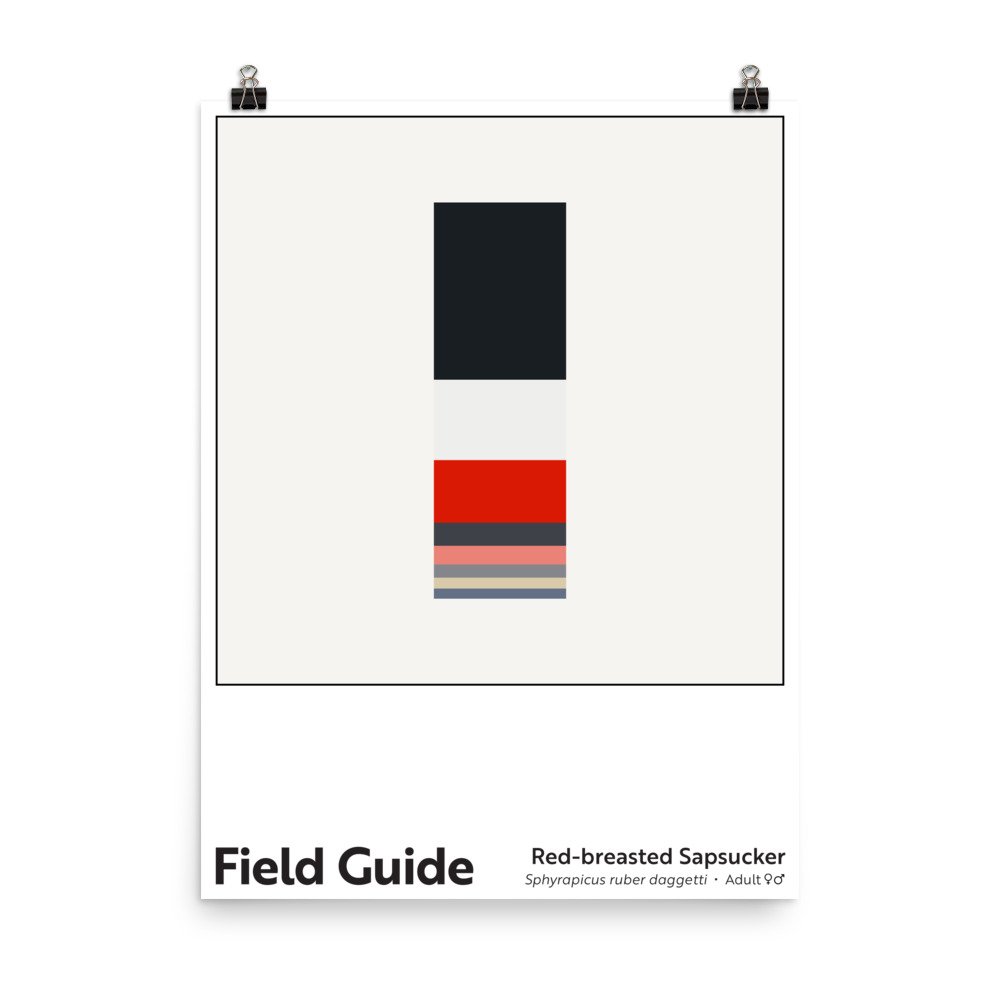Field Guide : Red-breasted Sapsucker
Field Guide : Red-breasted Sapsucker
Unlimited edition. 18 x 24 inch, museum-quality poster on matte paper.
I heartily approve of this woodpecker’s common name. “Red-breasted” is helpfully descriptive and “sapsucker” is descriptive and alliterative. One could argue, though, for a name change to red-breasted saplapper because the birds don’t so much “suck” as they do “lap.” They excavate neat rows of wells on the trunks of smooth-barked trees and then feed on the sap that flows from the exposed xylem and phloem. They also eat the many insects attracted to the sap wells. Harry Armistead, family friend and birder extraordinaire, writes that sapsuckers will sometimes dip the insects they catch in the sap “as a sauce.” 🥣 😋
For this particular poster, I created a color column based on the Sphyrapicus ruber daggetti subspecies of red-breasted sapsucker. This is the race I see here in coastal California (its range extends from southern Oregon to northern Mexico). In fact, I had the pleasure of watching one tap out some new sap wells just last week. The most notable difference between S. r. daggetti and S. r. ruber (the subspecies that lives farther north, from Oregon up to Alaska) is the amount of red and white; daggetti has a little less red and a little more white. It’s not surprising that the differences are subtle. In fact, before the early 1980s, the red-breasted, red-naped, and yellow-bellied sapsuckers were all considered a single species; since then, they’ve been “split” into three distinct species, but they continue to hybridize where their ranges overlap and, technically speaking, are considered a “superspecies,” a group of closely related organisms that are so similar in appearance and other features that the boundaries between them are often unclear.
Note: These archival poster prints feature rich, appealing colors. I encourage customers to take care in handling them until they are framed/protected for display; the darker colors on the matte paper can be scratched. They ship rolled, so customers need to flatten them before framing (or have their framer do so).
Charitable Sales Model: Whenever one of these poster prints is purchased, a charitable contribution equal to 10% of the print’s cost (or $3.60) is made to a nonprofit working to tackle environmental or social challenges. Read more about my charitable sales model here.

